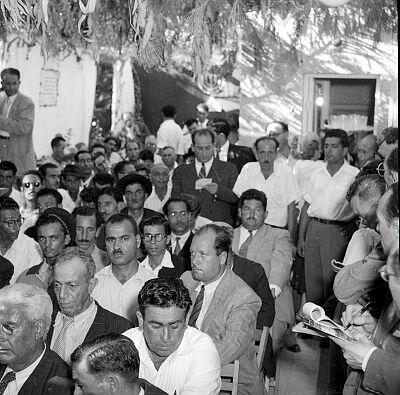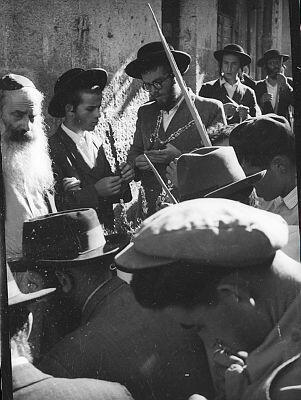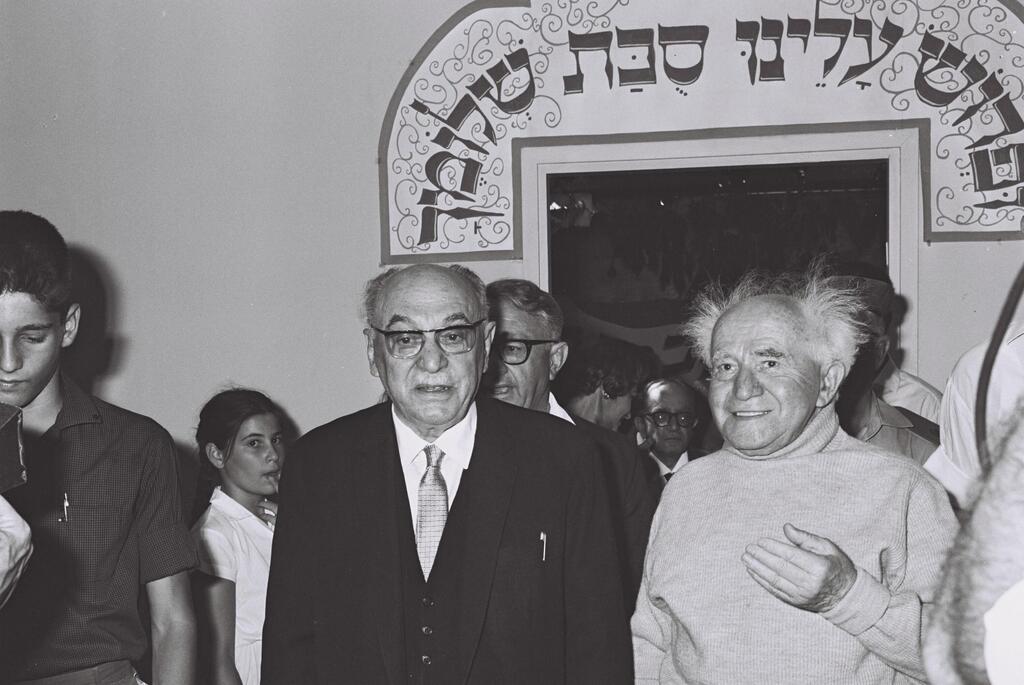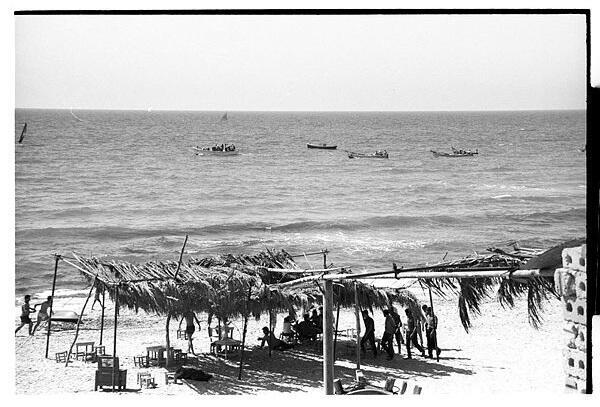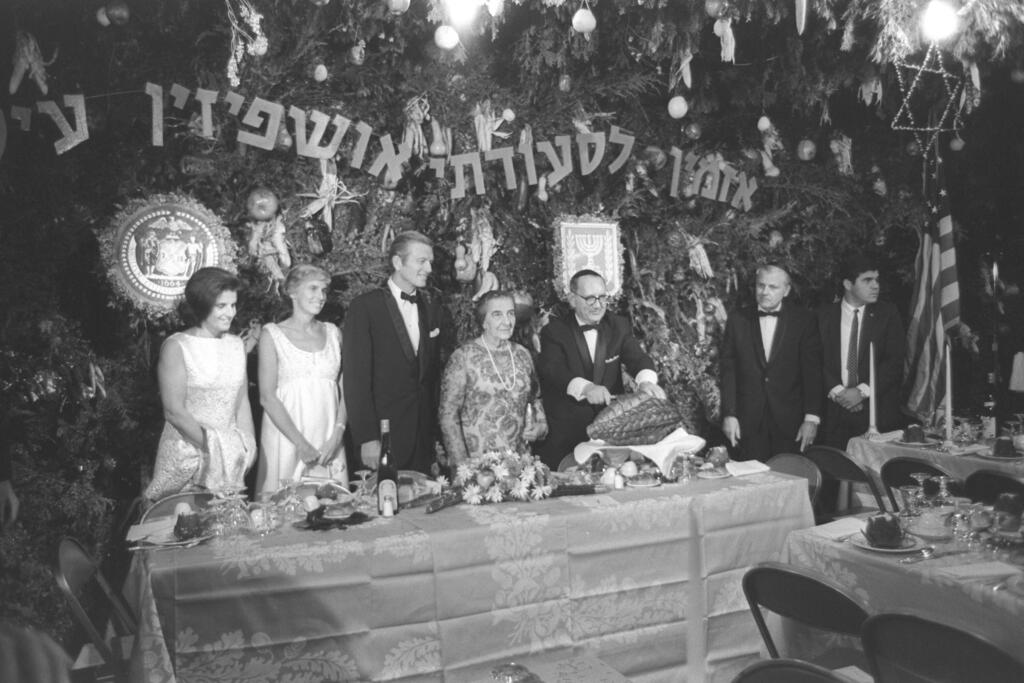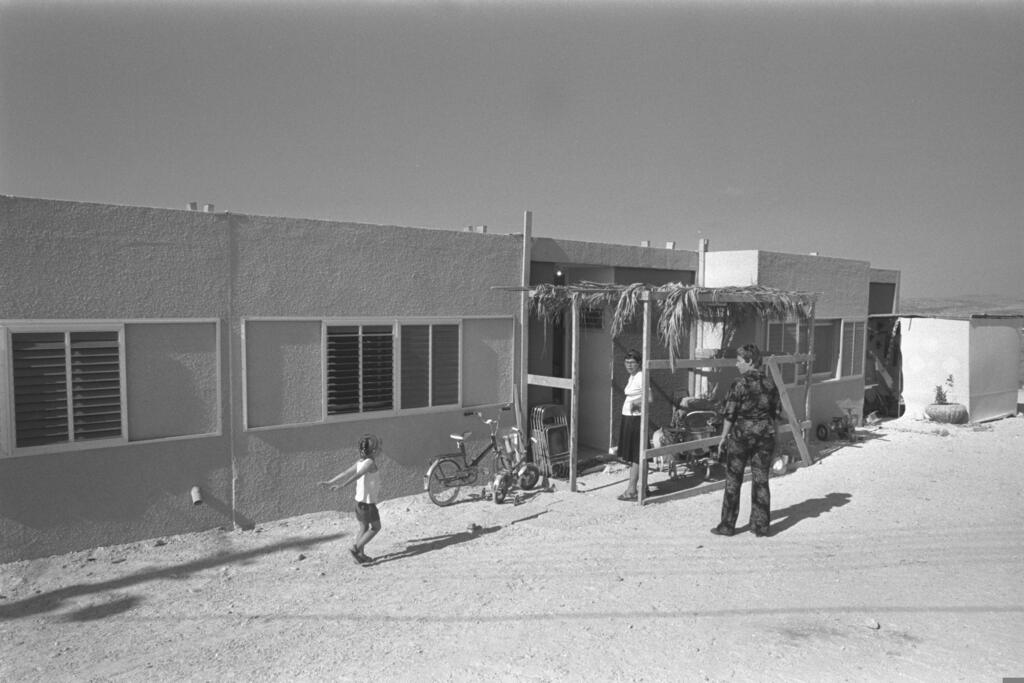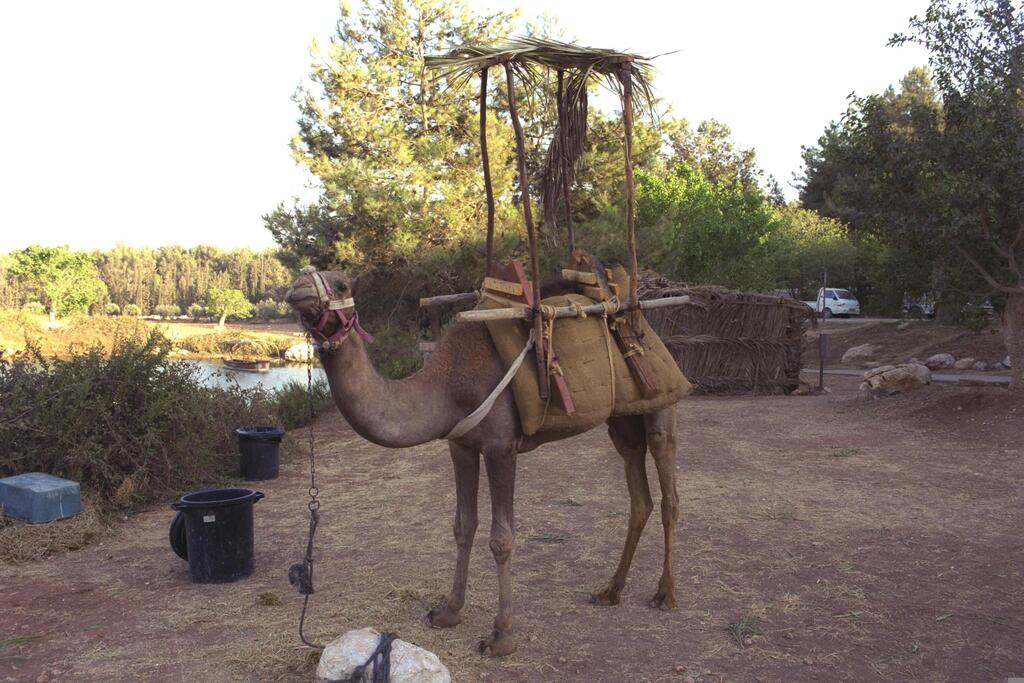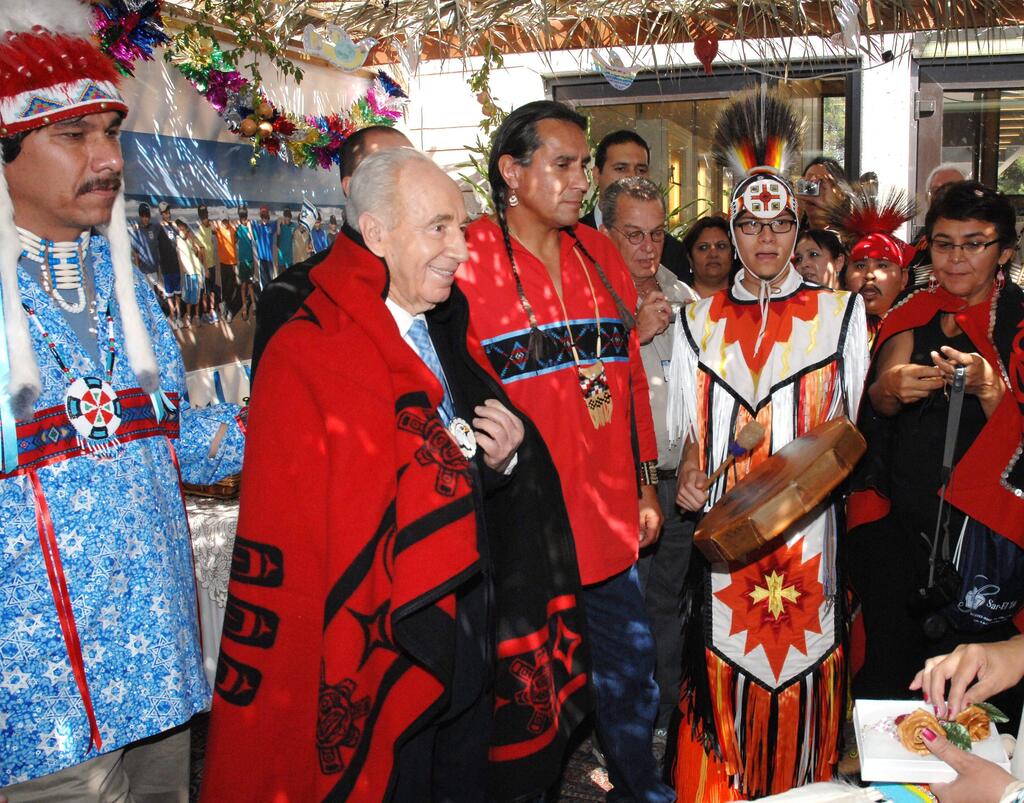Getting your Trinity Audio player ready...
On the festive occasion of Sukkot, we delved into the photo archive of the late David Rubinger and into the national photo collection of the Government Press Office, and pulled out photos documenting the holiday and its customs and the people of Israel, over the past seven decades.
1953
There is an ancient Jewish custom, more than 2,000 years old, of visiting rabbis on holidays. In the Babylonian Talmud this custom became a binding norm leading to the custom of hosting guest in the Sukkah. Former president Yitzhak Ben-Zvi, who was known for his humility and was admired by many, Began the practice of inviting Israelis to the President's Residence during Sukkot. It is the people's home, he said. Judging by the festive suits and serious faces, it is evident that the guests took the occasion seriously.
Every year since then, except in special circumstances, such as the beginning of the COVID epidemic. Presidents host guests during the holiday week
1954
Another custom that was born in the early years of the state was to send journalists to Ultra-Orthodox neighborhoods, to document the 'Four Species Market' and the construction of the Sukkahs. In 1954, the young photojournalist David Rubinger (1924-2017) was sent to Mea Shearim.
Rubinger snapped about half a million photos during his long career, including the famous photo of the paratroopers at the Western Wall during the 1967 Six-Day War, and later received the Israel Prize for Communication and was even awarded the unofficial title of "The State's Photographer".
Today, many of his photographs are preserved in the "Yediot Aharonoth" archive, including documentation from 1954 of religious and Ultra-Orthodox people coming to Mea Shearim to observe two ancient Jewish customs - to buy the four symbols of the holiday and to haggle with the vendors over the price and quality of the goods.
1966
Upon his retirement from political life, the first Prime Minister of the State of Israel, David Ben-Gurion, moved to Sde Boker in the Negev. On the eve of the 'old man's' 80th birthday, then-President Zalman Shazar drove to the Ben-Gurion's Sukkah in Sde Boker to congratulate him.
1967
It is difficult to understate the euphoric excitement of the State of Israel and the Jewish people in 1967, after the liberation of the Old City of Jerusalem. In the first Sukkot after the Six Day War, a festive reception was held in the Sukkah of then President Zalman Shazar. In the photo: Next to Prime Minister Levy Eshkol, Chief Rabbi Isser Yehuda Unterman, who was born in the Russian Empire, but insisted on wearing a tophat on festive occasions, as if he were an English lord.
12 View gallery
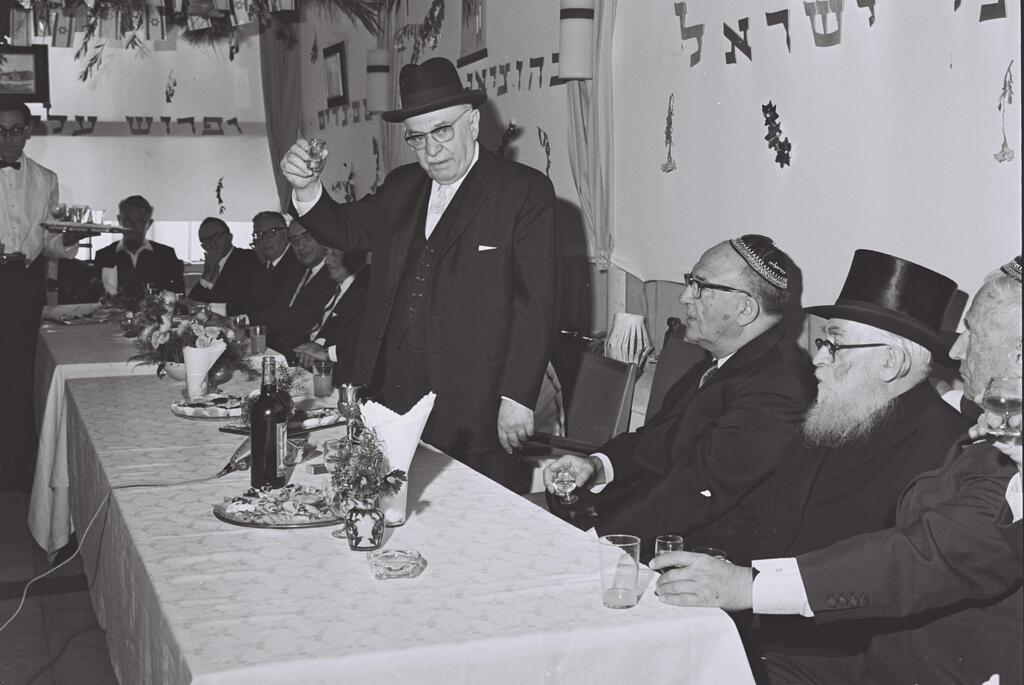

Festive reception hosted by President Shazar and visited by Chief Rabbi Unterman, 1967
(Photo: Fritz Cohen, Ltd)
1968
During the Six-Day War, IDF fighters conquered the West Bank and the Golan Heights, but also the Gaza Strip. In the first years after the war, many Israelis took advantage of the Sukkot holiday to visit the beautiful Gaza beach and rest under the canopies of the fishermen's huts. Over the years, visits to Gaza have become less pleasant and more dangerous.
1969
In 1969, the State of Israel was in turmoil when Prime Minister Levi Eshkol died suddenly and Golda Meir came to power. On her first Sukkot holiday in office, she chose to visit Brooklyn, New York. At the celebratory event held inside a huge sukkah, Rabbi Emanuel Beckman honored her with a Challah, in the presence of the mayor of New York at the time, John Lindsey, and Leah Rabin, the wife of Israel's ambassador to the United States, Yitzhak Rabin.
For those wondering where the ambassador went, the answer is that two days prior to the event, the elections were held in Israel; contrary to the earlier agreement, Golda informed Rabin that he would not be the Minister of Education but would remain an ambassador, therefore Rabin was offended and was absent from the event.
11.10.1973
During the 1973 Yom Kippur war soldiers deployed to the Sinai desert made a makeshift sukkah on a military vehicle. Although not strictly conforming with Jewish law the effort was praised and the need to feel some of the holiday spirit was understood after many of the men had lost comrades in the fighting.
12 View gallery
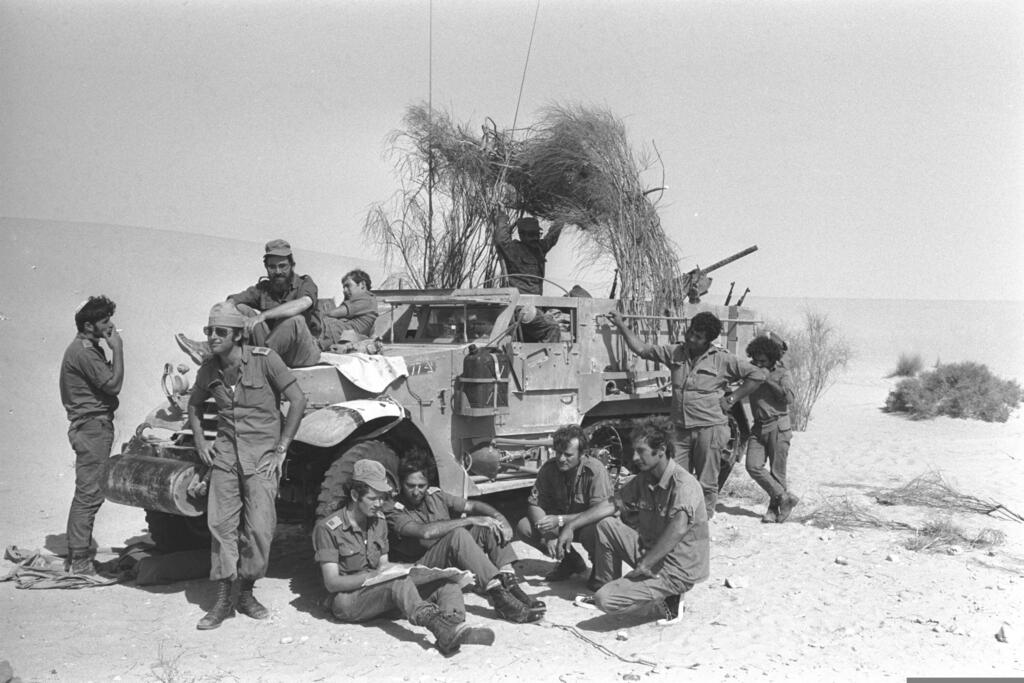

Makeshift 'Sukkah' on military vehicle in Sinai during war
(Photo: Arad Shlomo, Ltd)
13.10.1973
At the beginning of the Yom Kippur War, the Syrian Army captured Mount Hermon and part of the Golan Heights, but on October 13, the IDF was already pushing back with Damascus only 35 kilometers away. The IDF made sure to send a small amount of the 'four species' to the northern front. The many fighters who sought to observe the holiday proved the validity of a saying from the days of the First World War: "There are no atheists in the trenches."
12 View gallery
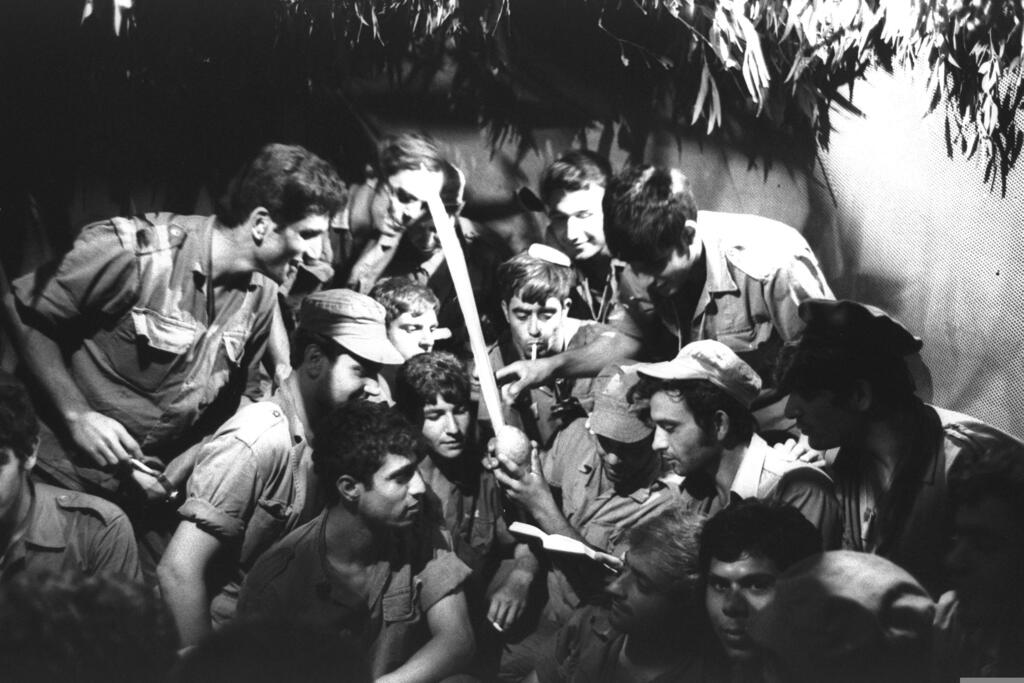

Soldiers huddling around symbols of Sukkot during Yom Kippur War
(Photo: Gad Binter, Ltd)
1977
A group of settlers saught to establish a new settlement on the West Bank, among them, Elyakim Rubinstein who was later cabinet secretary under Menachem Begin and went on to serve as a supreme court judge. The persistent efforts were ultimately rewarded with the establishment of Elkana
1999
In an effort to entice visitors and allow participants to outdue others in creative holiday celebrations, Naot Kedumim initiated an exhibition of Sukkot in 1999, including one on the back of a camel. By the way, the choice of a camel was not accidental. The Babylonian Talmud tells of a debate about the holiday laws. Among other things, the sages determined that a sukkah on a cart or on board a ship, the sukkah is kosher and it is also permissible to use it on the holiday. On the other hand, one who builds a Sukkah on top of a tree or on a camel's back cannot use it for the purpose of the holiday.
2007
Then-president Shimon Peres hosted an indigenous Canadian tribe and received a chief's feather and an honorable cloak. For those who wonder how much Peres suffered or enjoyed his role, this is the place to mention one of his wonderful quotes. "Don't listen to stories. Everyone wants to be loved. It's human".
2013
For many years now, a delegation of Hasidim from Chabad presents the president and the Prime Minister (separately) with an elegant set of the four species.
12 View gallery
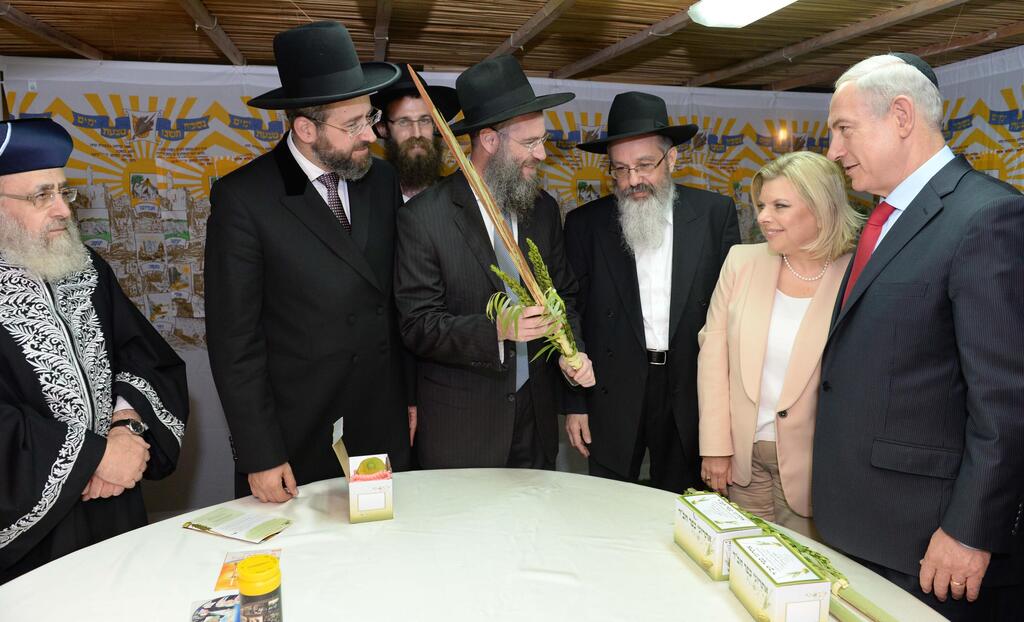

Chief Rabbis visit Prime Minister Netanyahu in festive tradiotion, 2013
(Photo: Government Press Office)



